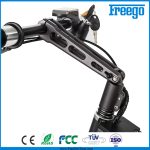3-Wheel Personal Transporter Battery Box: The Heart of Your Ride

===========================================================
Hey there, fellow tech enthusiasts, are you ready to dive into the world of 3-wheel personal transporters and explore the unsung hero of these sleek rides – the battery box? You’ve come to the right place! In this article, we’ll be taking a closer look at the 3-wheel personal transporter battery box, its key components, and what makes it tick.
What is a 3-Wheel Personal Transporter Battery Box?
A 3-wheel personal transporter battery box is the central unit that powers your 3-wheel personal transporter, providing the necessary juice to keep you moving. It’s essentially the heart of your ride, and without it, you’d be stuck in neutral. This clever box is designed to hold multiple batteries, manage power distribution, and regulate the flow of energy to your transporter’s motors.
Types of 3-Wheel Personal Transporter Battery Boxes
There are two primary types of 3-wheel personal transporter battery boxes: lead-acid and lithium-ion. Lead-acid batteries are the older, more traditional option, while lithium-ion batteries are the newer, more efficient choice. Lithium-ion batteries offer a longer lifespan, lighter weight, and higher energy density, making them the preferred option for many 3-wheel personal transporter enthusiasts.
Key Components of a 3-Wheel Personal Transporter Battery Box
So, what makes a 3-wheel personal transporter battery box tick? Let’s take a closer look at the key components:
- Batteries: The batteries are the most critical component of the battery box. They store energy, which is then converted into power to propel your transporter.
- Battery Management System (BMS): The BMS is the brain of the battery box, responsible for managing power distribution, regulating voltage, and preventing overcharging or over-discharging.
- Protective Circuit Module (PCM): The PCM provides an additional layer of protection, safeguarding the batteries from electrical surges, short circuits, and other potential hazards.
- Power Cables: The power cables connect the battery box to the transporter’s motors, transmitting energy and keeping you moving.
How to Choose the Right 3-Wheel Personal Transporter Battery Box
When selecting a 3-wheel personal transporter battery box, there are several factors to consider. Here are some key things to keep in mind:
- Compatibility: Ensure the battery box is compatible with your 3-wheel personal transporter’s make and model.
- Capacity: Choose a battery box with a sufficient capacity to meet your needs. If you plan to use your transporter for extended periods or cover long distances, opt for a higher-capacity battery box.
- Type: Decide between lead-acid and lithium-ion batteries, considering factors like lifespan, weight, and energy density.
- Safety Features: Look for a battery box with a robust BMS, PCM, and power cables to ensure your safety while riding.
3-Wheel Personal Transporter Battery Box Maintenance Tips
To keep your 3-wheel personal transporter battery box in top condition, follow these maintenance tips:
- Regularly Check Battery Levels: Monitor your battery levels to avoid over-discharging or overcharging.
- Clean the Battery Box: Keep the battery box clean and free from dust, debris, or water to prevent corrosion.
- Update Firmware: Regularly update your battery box’s firmware to ensure you have the latest features and security patches.
Common Issues with 3-Wheel Personal Transporter Battery Boxes
While 3-wheel personal transporter battery boxes are designed to be reliable, issues can still arise. Here are some common problems to watch out for:
- Battery Drain: Premature battery drain can be caused by faulty BMS, excessive use, or poor maintenance.
- Power Cables: Damaged or frayed power cables can disrupt energy transmission and cause your transporter to malfunction.
- Overheating: Overheating can occur due to excessive discharge, faulty BMS, or environmental factors.
Troubleshooting Tips for 3-Wheel Personal Transporter Battery Boxes
If you encounter issues with your 3-wheel personal transporter battery box, try these troubleshooting tips:
- Reset the Battery Box: Reset the battery box to its default settings to resolve software-related issues.
- Replace Faulty Components: Identify and replace damaged or worn-out components, such as power cables or batteries.
- Consult the User Manual: Refer to the user manual for guidance on troubleshooting and maintenance.
Safety Precautions for 3-Wheel Personal Transporter Battery Boxes
When working with 3-wheel personal transporter battery boxes, it’s essential to take safety precautions seriously:
- Wear Protective Gear: Wear protective gloves, safety glasses, and a face mask when handling electrical components.
- Avoid Water Exposure: Keep the battery box away from water, moisture, or humidity to prevent damage or electrical shock.
- Dispose of Batteries Properly: Dispose of batteries responsibly, following local regulations and guidelines.
Conclusion
The 3-wheel personal transporter battery box is the heartbeat of your ride, providing the power and energy you need to move. By understanding its key components, choosing the right battery box, and following maintenance tips, you can ensure a safe and enjoyable riding experience. Always prioritize safety precautions and take troubleshooting tips seriously to keep your 3-wheel personal transporter battery box in top condition.
In conclusion, the 3-wheel personal transporter battery box is an essential component of your ride, and with proper care and attention, it will keep you moving for miles to come.
<